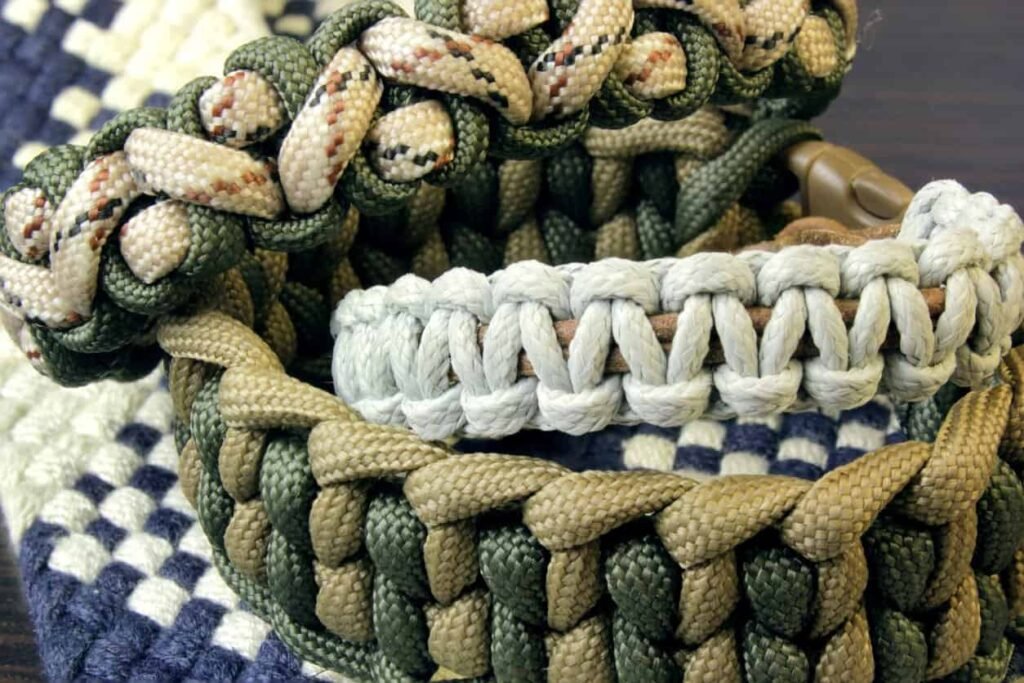
In the ever-evolving world of outdoor and survival gear, there stands a simple yet incredibly versatile tool: the paracord bracelet. At first glance, it may appear as just an accessory or a fashion statement for outdoor enthusiasts. But delve deeper, and you’ll discover its potential life-saving properties.
History and Evolution of the Paracord Bracelet
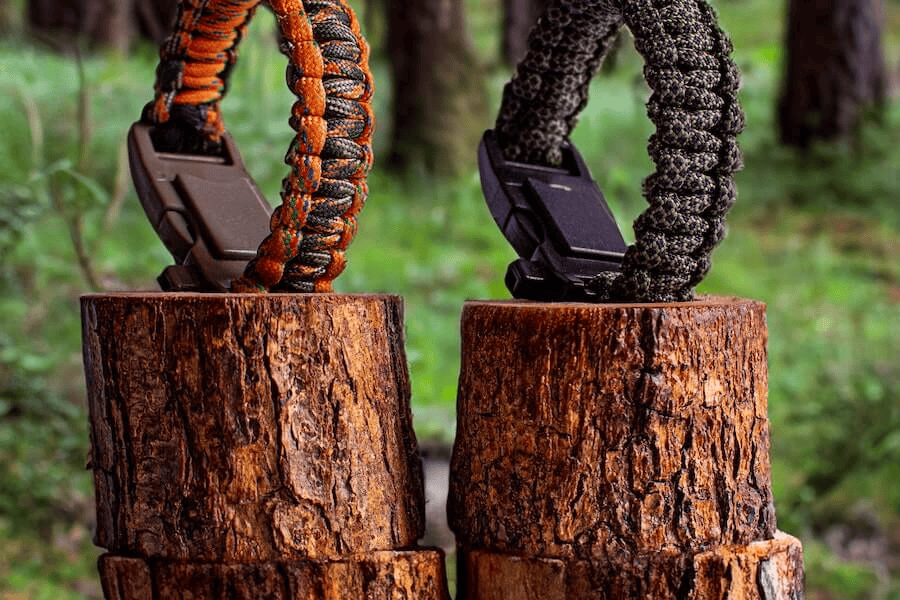
The Military Connection: Paracord’s Birthplace
The paracord, or “parachute cord,” traces its origins to World War II. As the name suggests, its primary function was to serve as suspension lines for parachutes used by paratroopers. The military-grade, known as Type III Paracord or 550 Cord, was especially revered for its ability to handle a weight of 550 pounds, making it an indispensable tool in military operations.
Discovering Its Versatility on the Battlefield
Soon after its introduction, soldiers in the field started realizing the multifaceted uses of this cordage. Beyond parachutes, it was employed to secure equipment, repair broken gear, and even makeshift bootlaces. Stories of its use during wartime are plentiful, painting a vivid picture of its importance. For instance, paracord was instrumental in the Hubble Space Telescope repair mission, showcasing its value even beyond the Earth!
From Combat Zones to Civilian Life
As war veterans returned home, they brought with them tales and experiences of the paracord’s unparalleled utility. This not only sparked interest among civilians but also led to its integration into everyday life. Campers, hikers, and survivalists, always on the lookout for versatile and lightweight gear, were quick to adopt and adapt the paracord survival bracelet. Over time, its presence in the outdoor community became undeniable, transforming it from a military essential to a civilian must-have.
Fashion Meets Functionality
The late 20th and early 21st centuries saw another evolution of the paracord bracelet. As more people started wearing them, there was a rise in paracord bracelet patterns. This led to a blending of aesthetics with utility. Brands, like SurvivorGeek, even began offering designer variants, marrying fashion with the ruggedness of survival gear.
Understanding Paracord Components
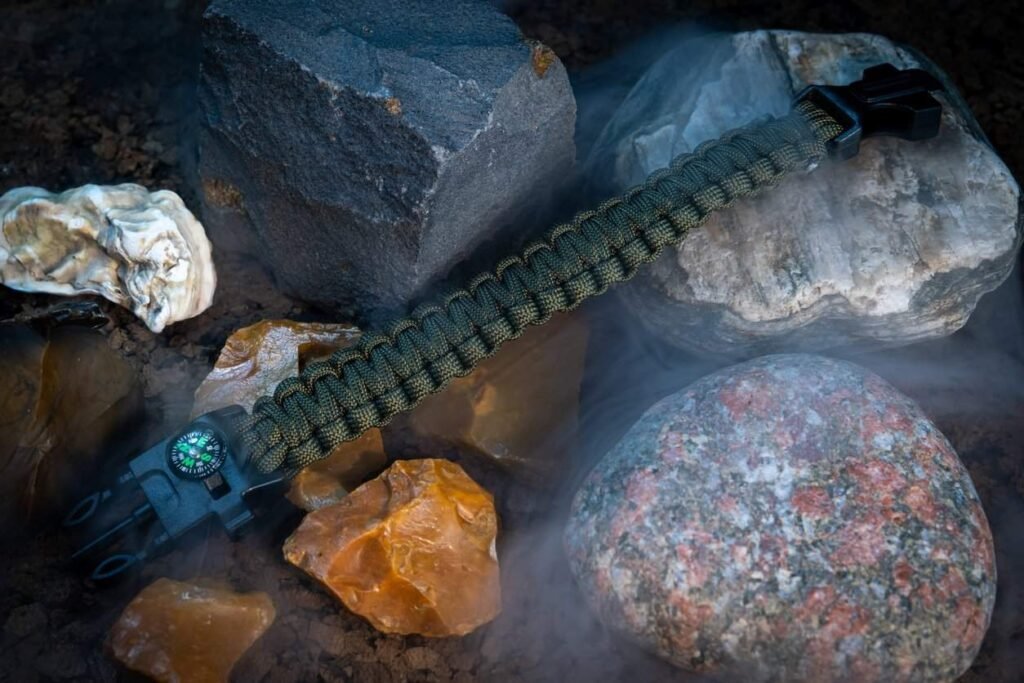
Inner Workings: The Multi-Strand Core
At its essence, what gives the paracord survival bracelet its outstanding strength is its unique structure. Inside the seemingly simple exterior sheath are multiple intertwined strands that are made of lightweight nylon. These strands exponentially increase the cord’s tensile strength.
The Outer Sheath: First Line of Defense
The external part of the paracord bracelet is called the sheath. This tightly woven layer serves as a protective barrier, ensuring that the inner strands remain unharmed from external factors like abrasion, UV rays, and mildew. Its resilience is evident when you consider its primary role in parachutes – holding everything together against strong winds and rapid descents.
A Dive into its Durability: Nylon vs Polyester
The majority of genuine military-grade paracord bracelets are made from nylon, a material known for its durability, flexibility, and resistance to environmental damage. While there are paracord variants made of polyester, nylon reigns supreme, especially in survival situations, owing to its superior strength and stretch capabilities. This detailed comparison between Nylon and Polyester sheds light on why nylon is the preferred choice.
A Spectrum of Types: Not All Paracords are Created Equal
While the 550 Cord or Type III Paracord is the most well-known, there exist several other types tailored to different needs. For instance, Type I paracord is lighter and is often used for shoelaces. On the other end, there’s Type IV, which boasts a breaking strength of 750 lbs. Each type is crafted for specific purposes, and understanding these can help users select the best one for their needs.
Practical Applications – Beyond Just a Bracelet
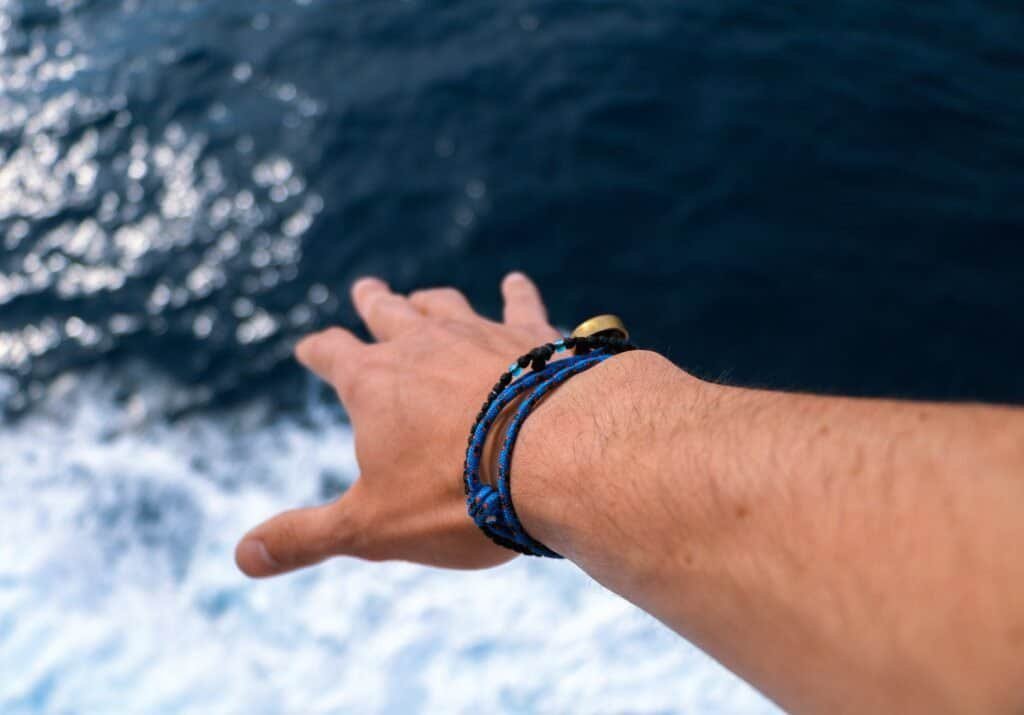
Emergency Rappelling and Climbing: Harnessing Heights
It may seem surprising, but in dire circumstances, a paracord survival bracelet can be unraveled to assist in climbing or descending steep terrains. While it’s not a replacement for dedicated climbing gear, in emergencies, it’s a potential lifesaver. This guide on emergency rappelling with paracord elaborates on the technique.
Fishing: From Wrist Accessory to Survival Tool
One of the most ingenious uses of the paracord is as a makeshift fishing line. By disassembling the inner strands, you can create a thin yet strong line. Attach a small hook, and you’re ready to catch dinner.
Setting Traps: Ensuring Food Security
In wilderness scenarios, sustenance is a prime concern. Paracord can be employed to set snares or traps, helping ensure a steady food supply. This tutorial on creating snares with paracord provides step-by-step instructions.
Tent and Shelter Building: Protection Against Elements
With its strength and flexibility, a paracord bracelet can be your go-to solution for erecting temporary shelters. Whether tying down tarpaulins or constructing a lean-to, the parachute cord bracelet comes to the rescue. Dive into this guide on building shelters with paracord.
First Aid: Lifesaving Adjustments
In critical situations, the parachute cord bracelet can be modified for first aid purposes, such as creating a sling, tying a splint, or even as a tourniquet in extreme cases. While it’s crucial to use it correctly to avoid complications, having a paracord on hand can make a significant difference.
Personal Defense: A Tool of Many Talents
While paracord itself isn’t a weapon, it can be employed as a makeshift self-defense tool. By adding weight to one end, it transforms into a simple flail. Always use responsibly and remember that personal safety comes first. This discussion on paracord for defense offers insights and precautions.
Fashion, Functionality, and the Modern Day
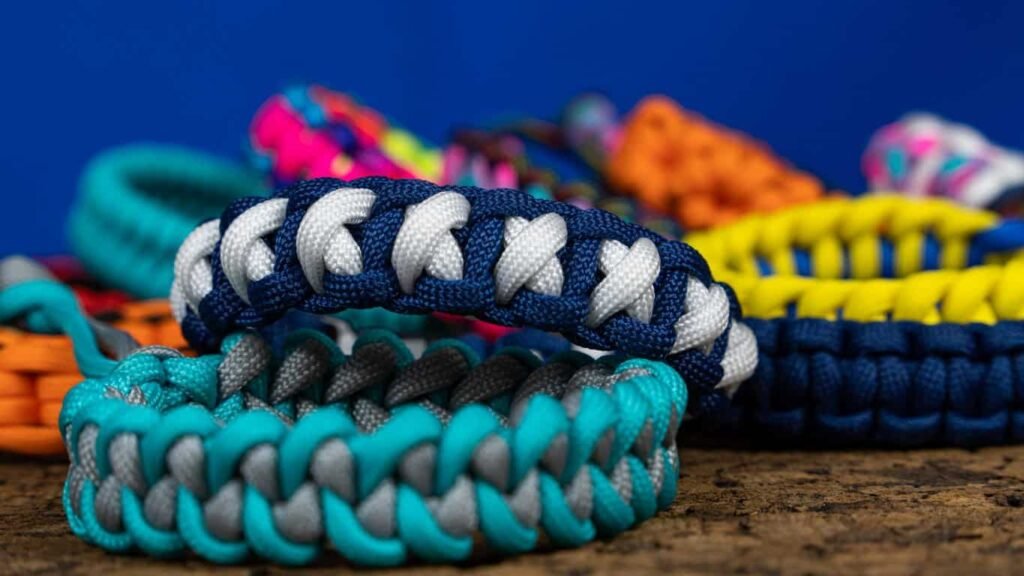
Trendsetting with Tactical Gear
While the initial intent behind paracord bracelets was sheer utility, they’ve transitioned into the world of fashion. The rugged aesthetic of a paracord bracelet appeals to many who want to sport a tactical, outdoorsy look. Major fashion outlets and blogs, like GQ’s piece on tactical fashion, highlight this ongoing trend.
Customization: Unleashing Creativity with Paracord Bracelet Patterns
One significant appeal is the bracelet’s customization. Beyond the standard braid, there are countless paracord bracelet patterns and designs enthusiasts craft, turning these bracelets into personalized style statements. ParacordGuild is an excellent resource, offering various tutorials on intricate bracelet designs.
DIY Enthusiasts Jumping on the Bandwagon
The DIY paracord bracelet movement is strong and growing. With online platforms like YouTube and Pinterest brimming with tutorials, it’s no wonder that crafting enthusiasts are diving into this niche. For those looking to start, this basic paracord bracelet instructions guide can pave the way.
Kits and More: Making Paracord Crafting Accessible
To further ease the process, many companies offer paracord bracelet kits. These kits come with all the necessary materials and step-by-step instructions, perfect for beginners. Sites like ParacordPlanet provide a range of kits, catering to various skill levels and design preferences.
Merging Durability with Daily Wear
The paracord bracelet’s resilience makes it a daily wear item for many. Whether you’re trekking in the wild or heading to a city café, the bracelet’s robustness ensures it stays intact. Several outdoor gear reviews often praise paracord products for their longevity, further solidifying their place in modern day-to-day life.
Beyond the Bracelet – Other Paracord Applications
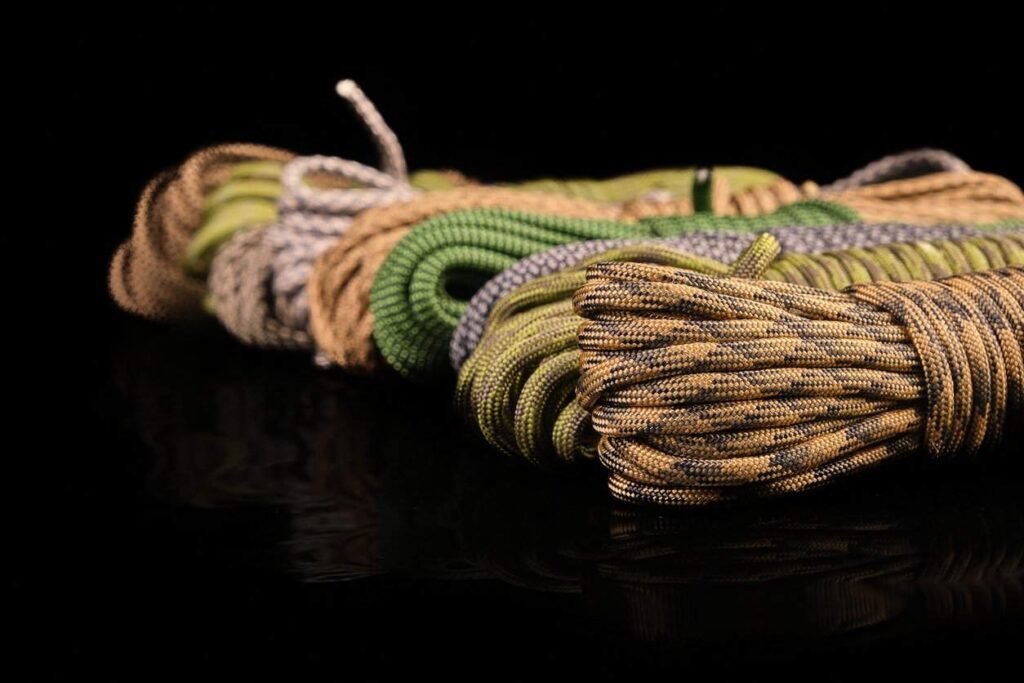
Survival Situations and Paracord Utility
In survival situations, a paracord survival bracelet can prove invaluable. The core strands can serve multiple purposes, from fishing lines to snares. Expert survivalist Bear Grylls often emphasizes the importance of versatile gear, and paracord products, especially bracelets, undoubtedly fall into that category.
Tents, Tarp, and Makeshift Shelters
A paracord’s strength can bear weights up to 550 lbs, making it ideal for rigging tents or crafting makeshift shelters. Whether you’re setting up camp or find yourself in an unplanned situation, paracord comes in handy. Websites like OutdoorLife often showcase the best ways to use paracords in outdoor setups.
Paracord in Medical Emergencies
In unforeseen circumstances, a parachute cord bracelet can be unwound to act as a tourniquet, sling, or even for splinting. Such versatility in a compact form is why many adventurers don’t leave home without it. Medical professionals like Dr. Joe Alton discuss the significance of improvisation in emergencies, further highlighting the paracord’s importance.
Crafting and Household Uses
Beyond survival, paracord’s flexible nature makes it an essential tool for various crafts. From making lanyards, and belts, to even dog collars, its applications are diverse. For those interested in crafting, Paracord Central offers a plethora of ideas and tutorials.
The World of Sports
From boating to mountaineering, the paracord’s durability and resilience make it a favorite. Sports enthusiasts and professionals value its multifunctionality. Websites like REI’s expert advice column frequently touch upon the importance of always having a reliable cordage during outdoor activities.
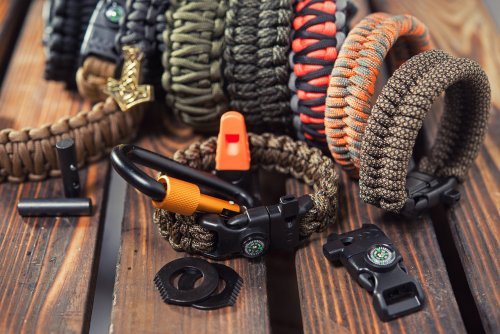
FAQ
Q1. What is the primary material of a paracord bracelet?
A:A paracord bracelet is typically made from nylon or polyester, which is the same material used in parachute cords. This material gives the bracelet its renowned strength and versatility.
Q2. How much weight can a standard paracord bracelet hold?
A:A standard “550 cord” paracord can hold up to 550 pounds (250 kg), which is where it gets its name. However, it’s essential to note that this can vary based on the specific type and manufacturing quality.
Q3. Is it challenging to make a DIY paracord bracelet?
A:While there’s a learning curve, making a DIY paracord bracelet is not overly difficult. Numerous online tutorials can guide you step-by-step.
Q4. Can I wear my paracord bracelet in water?
A:Yes, paracord bracelets can be worn in water. They dry relatively quickly and maintain their strength even when wet.
Q5. Are there different patterns or designs for paracord bracelets?
A:Absolutely! From simple braids to intricate designs, there are numerous paracord bracelet patterns. Websites like Paracord Planet offer a variety of patterns and inspirations.
Q6. How long is the cord in a typical paracord bracelet?
A:A standard bracelet, when unwound, can provide between 8 to 20 feet of cord, depending on the bracelet’s size and design.
Conclusion
The paracord bracelet, an unassuming piece of gear, carries with it a legacy of military precision, outdoor adaptability, and survival potential. Its versatility transcends its aesthetic appeal, marking it as an essential tool for many. While it’s not a guaranteed lifesaver, in the right hands and circumstances, it undoubtedly can be.

